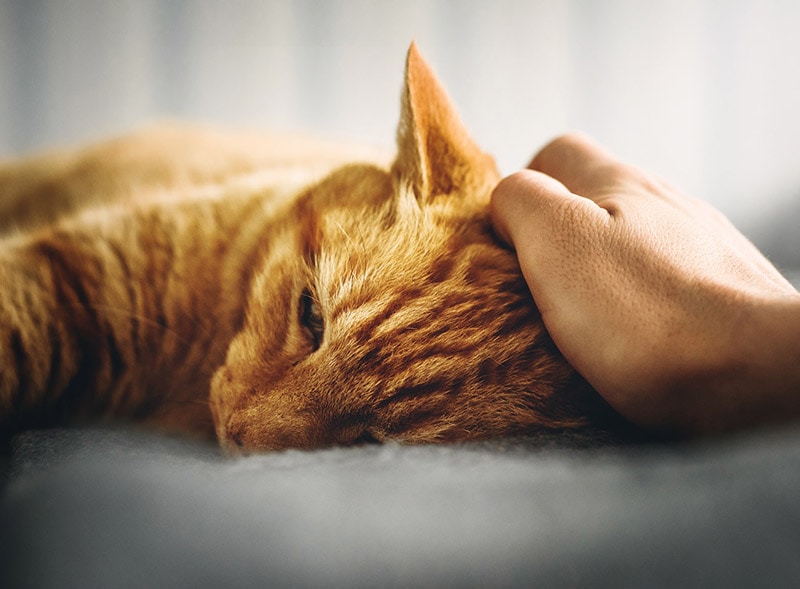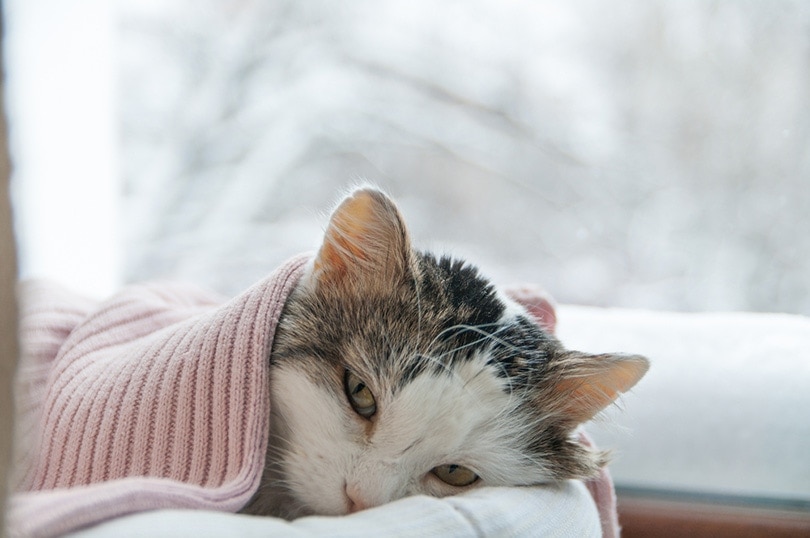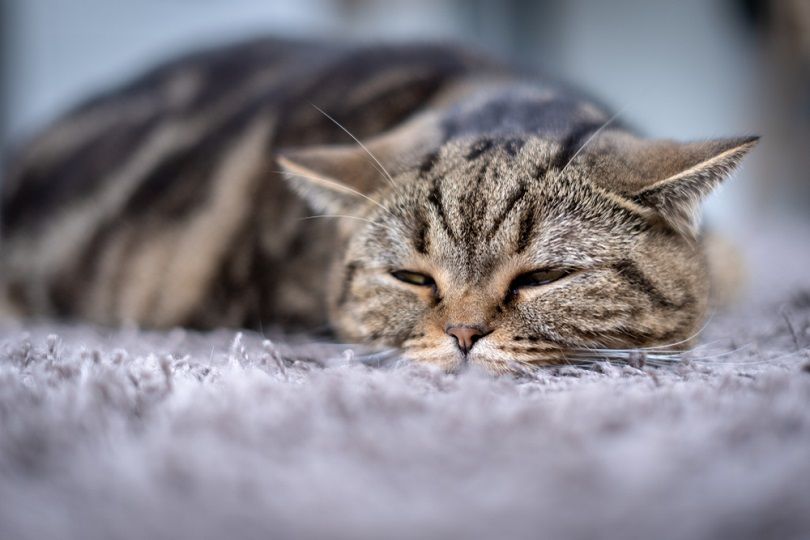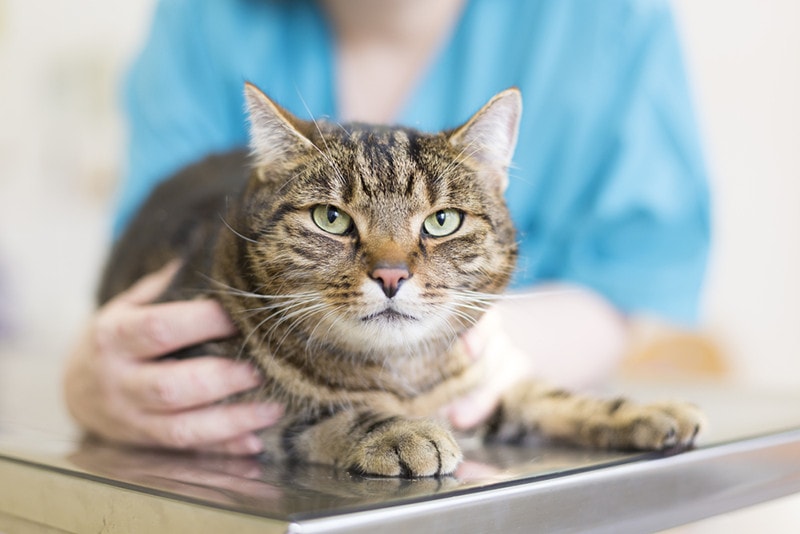Can Fleas Kill a Cat? Prevention & Treatment

By Misty Layne
Updated on

Fleas are a complete nuisance to have on your feline and in your home. Not only do these tiny things cause major itching (sometimes in both your cat and yourself), but flea infestations are quick to grow out of control until they’re embedded in your carpet and elsewhere. As annoying as fleas are, though, they can’t do too much harm to your kitty, right?
Unfortunately, that is incorrect. While most of the time, fleas are going to be merely frustrating and itchy for all involved, they can do more damage than that to felines. In fact, in some cases, fleas can kill cats (although this is rare).
Can fleas kill a kitten, too, or only adult cats? And how on earth are fleas able to kill felines? Keep reading to learn all you need to know!
Deadly Diseases That Come From Fleas
Fleas can kill cats by transmitting potentially deadly diseases or taking too much blood from them. Here’s a closer look at the dangers fleas can pose to your favorite feline (although it’s important to remember that most of these occur only rarely).
Anemia
You might have been wondering if fleas can kill a kitten as well as an adult cat. The answer is yes, and anemia is how they do that. When it comes to fleas and anemia, kittens and senior cats are the most at risk of death1.
You know that fleas attach to our feline companions so they can live off the cat’s blood. Well, if a kitty has too many fleas (and, as we said before, flea infestations can be quick to become overwhelming), then they may lose too much blood. And that loss of blood can result in anemia, which is seen more often in kittens than adult cats and can be deadly.
Signs of anemia in felines include lethargy, pale gums, and weakness.

Feline Hemotrophic Mycoplasmosis (FHM)
This disease, with a long, complicated name, is usually caused by a microscopic parasite called Mycoplasma haemofelis, that attaches itself to a cat’s red blood cells. A less severe form of this disease is caused by Mycoplasma haemominutum. It can be passed to your cat by fleas that have already fed off another animal infected with this disease.
When it comes to signs of FHM, it all depends on the feline. Some animals may have no signs, some only minor signs, and in others, the disease can be fatal.
The infected red blood cells may break down or be treated as ‘foreign’ and destroyed by the cat’s immune system. The cat becomes anemic if too many red blood cells are infected and destroyed. If your cat has FHM, signs you might see include fever, pale gums, weakness, lack of appetite, jaundice, and an enlarged spleen.
With FHM, early diagnosis and treatment are vital; 30% of cats that were not treated die due to complications with this disease2.

Tularemia
Tularemia may be a disease you’ve never heard of before, or you might have only heard it called by its other name, “rabbit fever”3. Why would something called rabbit fever affect felines? This bacterial infection can be spread by fleas that have fed on infected animals (such as rabbits) that then move on to feline hosts. Cats can also be exposed if they eat an infected rabbit or rodent. And while it’s pretty rare, if left untreated, it can cause serious health problems for your cat and has a high potential of being fatal.
Signs of tularemia include enlarged lymph nodes, fever, jaundice, skin lesions, respiratory issues, and organ failure.
Though it can be treated, recovery from tularemia may take weeks and requires aggressive treatment.

Feline Panleukopenia (Feline Distemper)
You’re likely familiar with this health issue, given there are vaccines for it. Unfortunately, it’s another way fleas can kill a kitten. Feline panleukopenia, also known as feline distemper, is a very contagious viral infection of cats caused by feline parvovirus. Kittens are usually the most seriously affected by this virus. Adult cats are more likely to have been vaccinated for feline panleukopenia, so they’re at less risk, but if a newborn kitten is bitten by a flea carrying this virus, it could prove fatal. (Unvaccinated adult cats are at risk, as well.) Infected cats shed the virus in urine, feces and nasal secretions. Infection occurs when susceptible cats come into contact with these secretions or the fleas from infected cats.
Feline parvovirus affects and kills cells that are rapidly growing and dividing and this means it mainly targets the bone marrow and intestinal tract. You’ll see several signs if your feline is infected, such as loss of appetite, lethargy, sudden onset of severe vomiting, and bloody diarrhea.
So, be sure to vaccinate your pets to avoid this!

The Plague
Yes, that plague!
The plague fleas can carry is the bubonic plague, aka the Black Death, which wiped out millions in the 1300s in Europe. The good news is that bubonic plague, which is caused by the bacteria Yersinia pestis, is now controllable via antibiotics. However, it needs to be diagnosed and treated sooner rather than later. It is mainly transmitted by the fleas of rats and other rodent species in certain areas. Signs of bubonic plague in felines include swollen lymph nodes, fever, extreme lethargy, ulcers in the mouth, and weak pulse. Bubonic plague progresses quickly, so it’s vital that you get your cat to the vet at the first sign of it.
The next plague is the septicemic plague, a continuation of the bubonic plague. Septicemic plague occurs when the bubonic plague continues to spread and starts wreaking havoc on organs, which can result in a faster heart rate, trouble breathing, diarrhea, and vomiting.
Then there’s pneumonic plague, which, as the name suggests, affects the lungs. It can come about due to poorly treated septicemic plague, making it secondary pneumonic plague (rather than primary). This means that signs of it will be the same as for septicemic plague, but with the addition of a cough or other unusual lung sounds.

Flea Prevention & Treatments
By now, you’re probably wondering how to prevent and treat fleas to avoid any of the above happening to your kitty. Luckily, there are several options for preventing and treating fleas, some for your cat and some for your home!
- Topical treatments, applied to the nape of the neck, prevent fleas and get rid of any already there
- Flea medicine given via oral route
- Flea shampoos
- Flea powders
- Regular vacuuming of the home
- Aerosol sprays for the home
- Pest control companies
Topical or oral treatments will be your best bet for keeping fleas off your favorite feline in the first place. There are many on the market, so speak with your vet to find the one that’s right for your cat.

Final Thoughts
You may have thought fleas were a mere nuisance, but they can be deadly for your cat (particularly kittens!). Fleas can carry a host of diseases,even including the bubonic plague. And in the case of kittens, it’s easier for fleas to cause anemia by taking too much blood, which can be deadly. Luckily, there are many ways you can prevent fleas from getting on your cat or into your home, as well as ways to treat any flea infestations before they get out of hand.
Featured Image Credit: David Jara Bogunya, Shutterstock











